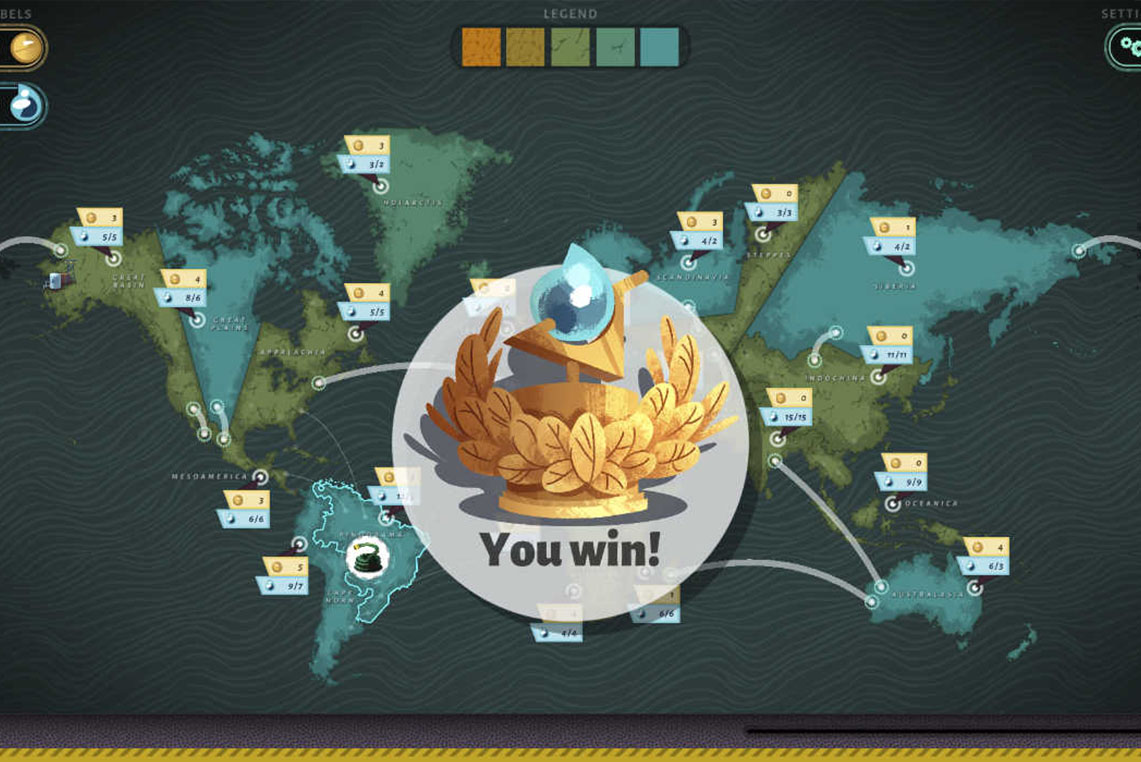Gamification for environmental conservation
Gamification is a technique of applying game elements and dynamics to non-game contexts to achieve concrete goals. In other words, the idea is to use the typical mechanisms of games (e.g., points, challenges, rewards) for purposes other than simple entertainment. It is following these principles that conservation games, games for smartphones with an environmental conservation theme, are being developed. According to Chris Sandbrook, professor of geology at Cambridge University, when developing these games, the main goals may be to educate and promote virtuous behavior, raise funds, and collect data useful for scientific research.
One example of a game to educate is “Aquation: The Freshwater Access Game“, designed by the Smithsonian Science Education Center in Washington, DC. This game was created to raise awareness and improve knowledge of water conservation issues by giving players a global view of water resource issues. Players can build pipelines, use desalination plants, conduct research, establish policies, and allocate resources to ensure that no region goes without water. Instead, an example of a game developed to collect data is “eBird“, a smartphone application developed in the United Kingdom that rates users on their accuracy in identifying bird species, comparing it to others. By exploiting competitive dynamics in this way, in addition to creating more engagement, it aims to increase the quality of the data collected.
Is the game worth the candle?
In recent years, there has been growing optimism about the possibilities of gamification, and this has led to the creation of projects such as “Internet of Elephants“, a Kenyan company that specializes in developing conservation games. Estimates regarding the global gamification market are growing. In 2017, the value of the market was estimated at around $2.17 billion and is expected to reach a volume of nearly $20 billion by the end of 2023. However, despite the increased interest and demand for these games, there is still no clear scientific consensus on their effectiveness in promoting sustainable behaviors among users.
Professor Markus Brauer and researcher Benjamin Douglas, from the Department of Psychology at Wisconsin University, in a collection of articles on the psychology of climate change, argue that we do not yet have enough evidence to make a clear judgment about the effectiveness of conservation games. For example, we still cannot fully explain why some games work better than others and what factors determine their success.
In the face of this uncertainty, while waiting for new data, experts urge not to get carried away by enthusiasm and also consider the possible risks of gamification. Professor Chris Sandbrook and colleagues, for example, point out as possible risks that of oversimplifying the information one wants to communicate, with the possible effect of sending a distorted message of the reality of the situation, and the risk that users will use the game as an escape from the real problem, sometimes precisely because of the simplicity with which reality is represented. The latter is surely the main risk of gamification: creating a game that causes users to be passive, rather than active in solving the problem.
Paolo Stella’s novel also invites us to reflect on this risk, showing us a virtuous (and fictional) example of how to use games for environmental conservation. In the story, villagers are drawn toward the environmental problem through a game, puzzles, the result of which is participation and the creation of social bonds with other people. The game, in this case, is an effective tool precisely because it brings people together to collaborate and take action, avoiding the isolation of the players. In a recent interview, we asked Paolo Stella what the most important message of the book was. He answered simply, “Let’s participate, let’s participate, let’s participate.”
Conclusions
Gamification and the development of conservation games are now a reality. Several environmental conservation agencies already use this technique, and predictions are that the market for these tools will grow. The results in inducing sustainable behaviors seem to be more positive than negative, but the extent and causes of this success remain unclear. While we wait for new data, it is useful to consider the risk that the games are driving users away from the real problem, rather than leading them to actively counter it. Stella’s book invites us to reflect on the importance of games that get people to cooperate in real life, away from smartphone screens.

After graduating with a Master’s degree in Philosophy from the University of Padua, he attended a Master’s degree in Science Communication at the University of Trento. He currently works as a science communicator for foundations and research centres in Italy. He collaborates as a writer for Atmosphera Lab.







